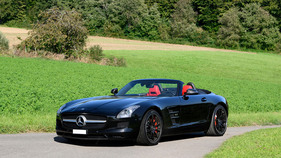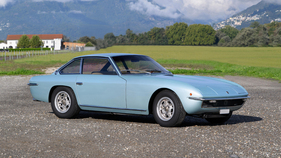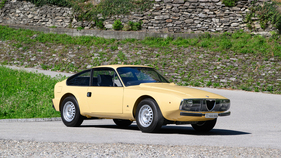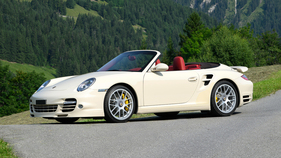Some cars are considered works of art - and racing is also an art. Half a century ago, BMW brought the two together on the initiative of French racing driver and auctioneer Hervé Poulain; the first "BMW Art Car" was created. Since then, a total of 20 official Art Cars have been created, some based on racing cars, others based on production vehicles.
The BMW Art Cars appeal to both car and art lovers. Since July 4, 2025, no fewer than eight Art Cars can be admired at the Louwman Museum in The Hague in the Netherlands as part of the summer exhibition "Fine Art on Wheels" until August 31, 2025. Zwischengas was there to take a look around.
On the 50th anniversary of the Art Cars
Over a cup of coffee in the museum restaurant, Director Ronald Kooijman explains how the exhibition came about: "When we were philosophizing about interesting topics for exhibitions, the idea of the BMW Art Cars came up (we didn't even know that the Art Cars were celebrating their 50th anniversary this year, we only found out later). So we called BMW and asked if we could borrow a few Art Cars. That worked, they asked which ones we wanted. We had already drawn up a list of cars and got them all. That's how this exhibition came about. Only later did it become clear that this is the largest number of art cars to be seen in one place in the anniversary year!"
The exhibition at the Louwman Museum is also the only occasion - with the exception of the three cars in BMW's own museum in Munich - where the Art Cars will be on display for more than just a few days during the anniversary year. In Switzerland, six Art Cars were on display in May to mark the 50th anniversary of BMW Switzerland, but in The Hague, the cars are on display in the museum for everyone to see. And it has to be said: it is hard to imagine an environment in which the cars can be shown to their best advantage. The exhibition takes up about half of the hall, the rest is empty - and that's a good thing, because it creates a pleasantly spacious impression without distracting other cars or objects.
The BMW Art Cars began with racing cars, and we must honestly admit that we think that racing cars worked on by artists are the most beautiful Art Cars. Undoubtedly, there will be people who consider motorsport as something for culture vultures and prefer Art Cars based on limousines. Tastes differ, and that's a good thing!
With the 3.0 CSL designed by Alexander Calder (1975), the 3.0 CSL by Frank Stella (1976), the 320i by Roy Lichtenstein (1977) and the M1 by Andy Warhol (1979), the first four art cars in history can be seen in the Louwman Museum. All of these cars have a racing history, they were all entered in the 24 Hours of Le Mans and, in the case of Stella's car, also in the 1976 Sports Car World Championship race in Dijon, France.
Alexander Calder: BMW 3.0 CSL (1975)
Calder's car stands out with its fresh color scheme of yellow, red, blue and white and was particularly popular with the press and spectators during its participation in the Le Mans race (Hervé Poulain was one of the drivers).
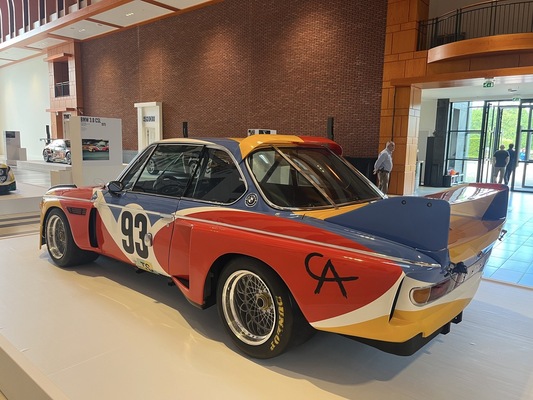
Frank Stella: BMW 3.0 CSL (1976)
The 3.0 CSL by Frank Stella has a rather technical theme, as the entire body is covered with a grid paper motif on which several lines and figures are depicted as a kind of blueprint. The Bavarian artist and painter Walter Maurer transferred Stella's design to the car. Roy Lichtenstein is known for his large-format comic-style paintings. Elements of these, such as the dots and lines and bright colors, can also be seen on the 320i he worked on, with the lines representing the path the car is on, according to the artist.
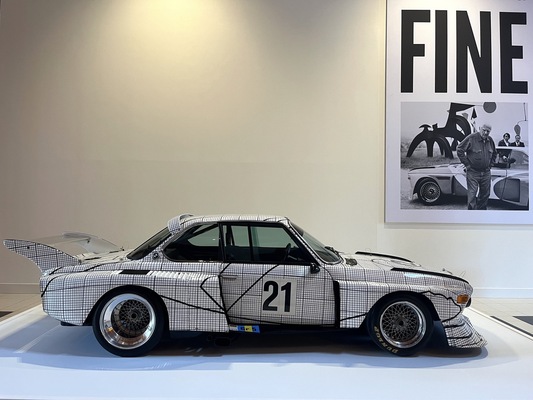
Andy Warhol: BMW M1 (1979)
Andy Warhol worked on the M1 sports car in just 28 minutes with a thick layer of paint in many colors. The rough style with a thick layer of paint is clearly visible in several places on the car. In 2022, the car was pelted with flour by climate activists during an exhibition in a museum in Milan.
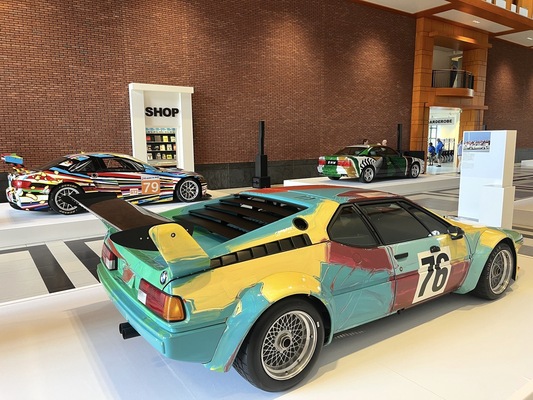
Cèsar Manrique: BMW 850 CSi (1990)
The next Art Car in the exhibition is number 10, a 730i by Cèsar Manrique from 1990. With the colorful paint job, Manrique created a homage to the island of Lanzarote, which was his home.
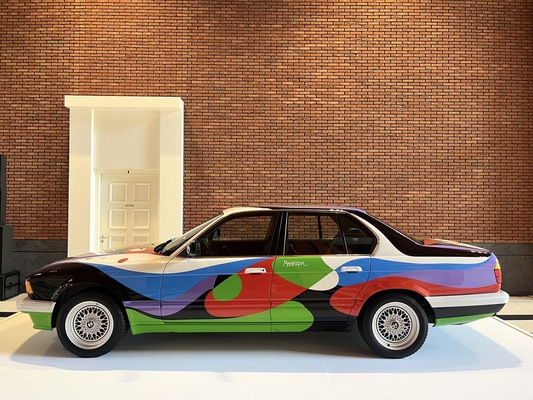
Esther Mahlangu: BMW 525i (1991)
This is followed by Art Car number 12, a 525i by Esther Mahlangu from 1991. The South African reproduced the colors and patterns that the people of the Ndebele tribe paint on their houses.
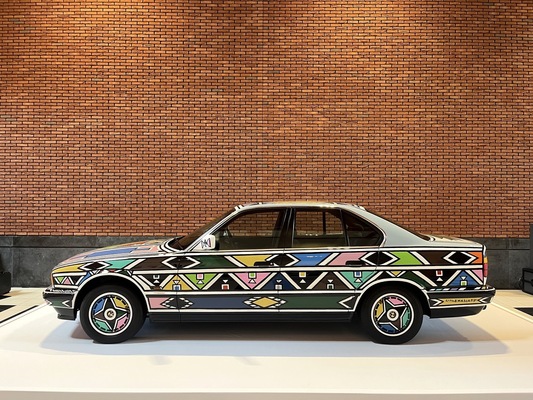
David Hockney: BMW 850 CSi (1995)
The American David Hockney designed an 850 CSi, Art Car number 14, in 1995. Like Andy Warhol and Roy Lichtenstein, who created their own Art Cars two decades before him, Hockney is counted among the "Pop Art" artists. Unlike most Art Cars, Hockney's creation does not exude speed or power, but symbolizes the artist's own life and contains elements that play a role in it: his dog and landscapes from his surroundings.
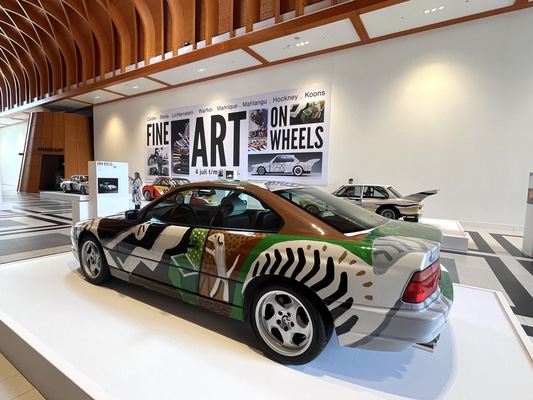
Jeff Koons: BMW M3 GT2 (2010)
The eighth Art Car on display in The Hague is also the youngest in the selection, number 17, an M3 GT2 - again a racing car - which was given a colorful design by Jeff Koons in 2010. "It's about being the first," said Koons at the time when explaining his idea for the car to compete in the 24 Hours of Le Mans. However, Koons was not thinking of a car race, but of something completely different ...
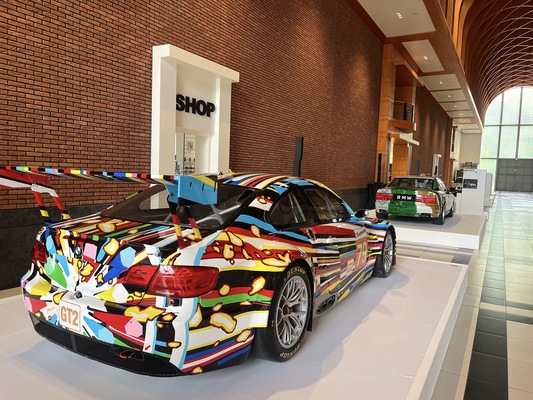
Completed Art Cars book
To mark the 50th anniversary of BMW Art Cars, an updated version of the wonderful book on the subject has also been published by the German publisher Hatje Cantz. All the intricacies and backgrounds of the 20 Art Cars are presented in words and pictures, supplemented by interviews and essays as background information. Compared to the previous edition of the book, which was published in 2018, Julie Mehretu's art car is now also included: the BMW M V8 Hybrid, which took part in the 24 Hours of Le Mans last year with the two DTM champions Sheldon van der Linde and René Rast as well as Robin Frijns as drivers. The 236-page hardcover book is available in a German and an English edition and is of course also available in the Louwman Museum store.
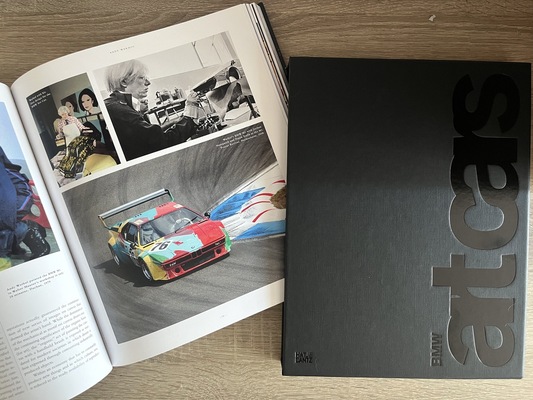
The exhibition "Fine Art on Wheels" can be seen until August 31 at the Louwman Museum at Leidsestraatweg 57 in The Hague (NL). The museum is open seven days a week from 11 am to 5 pm during the summer vacation.
Information and tickets can be found on the museum's website





























